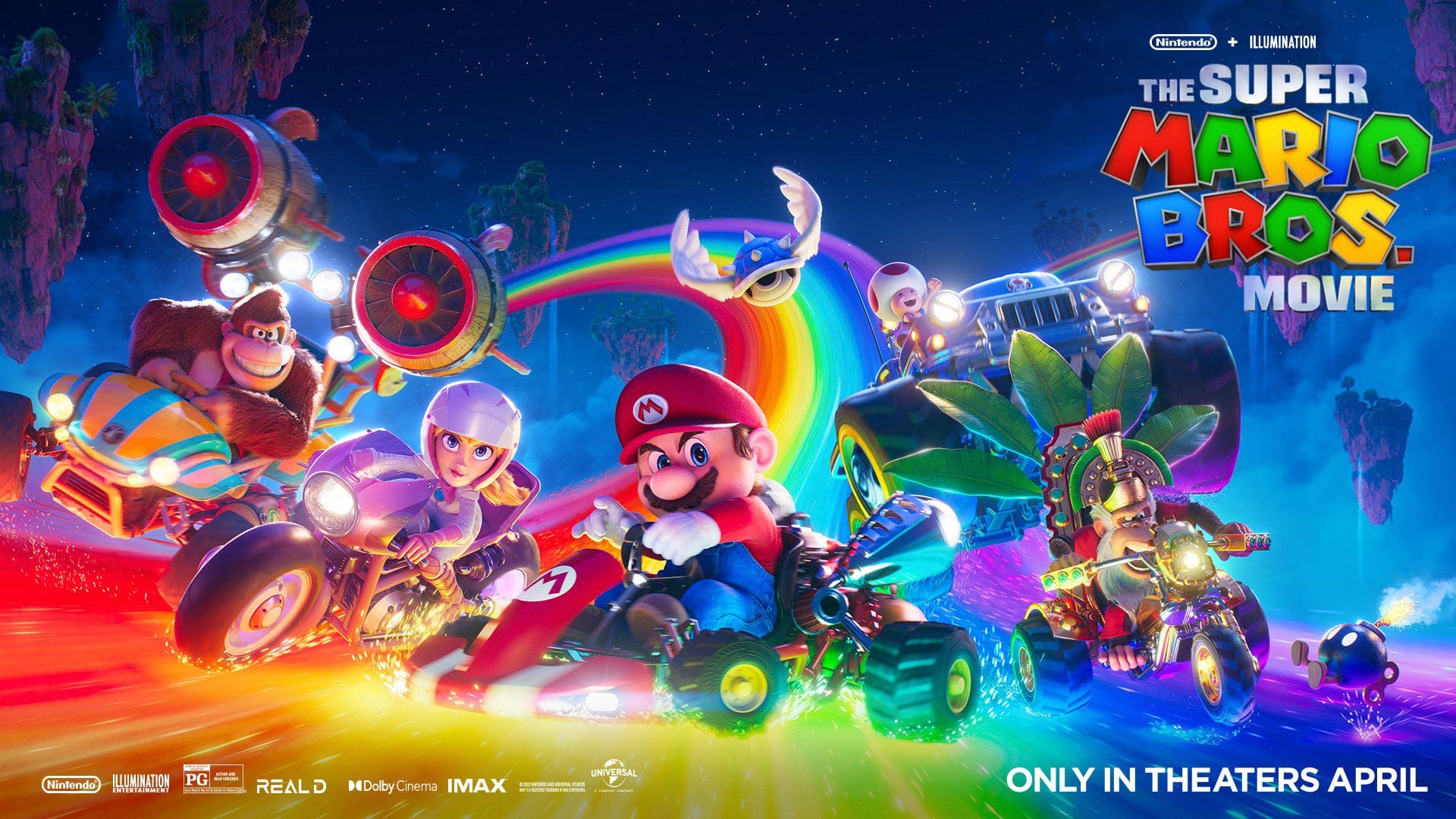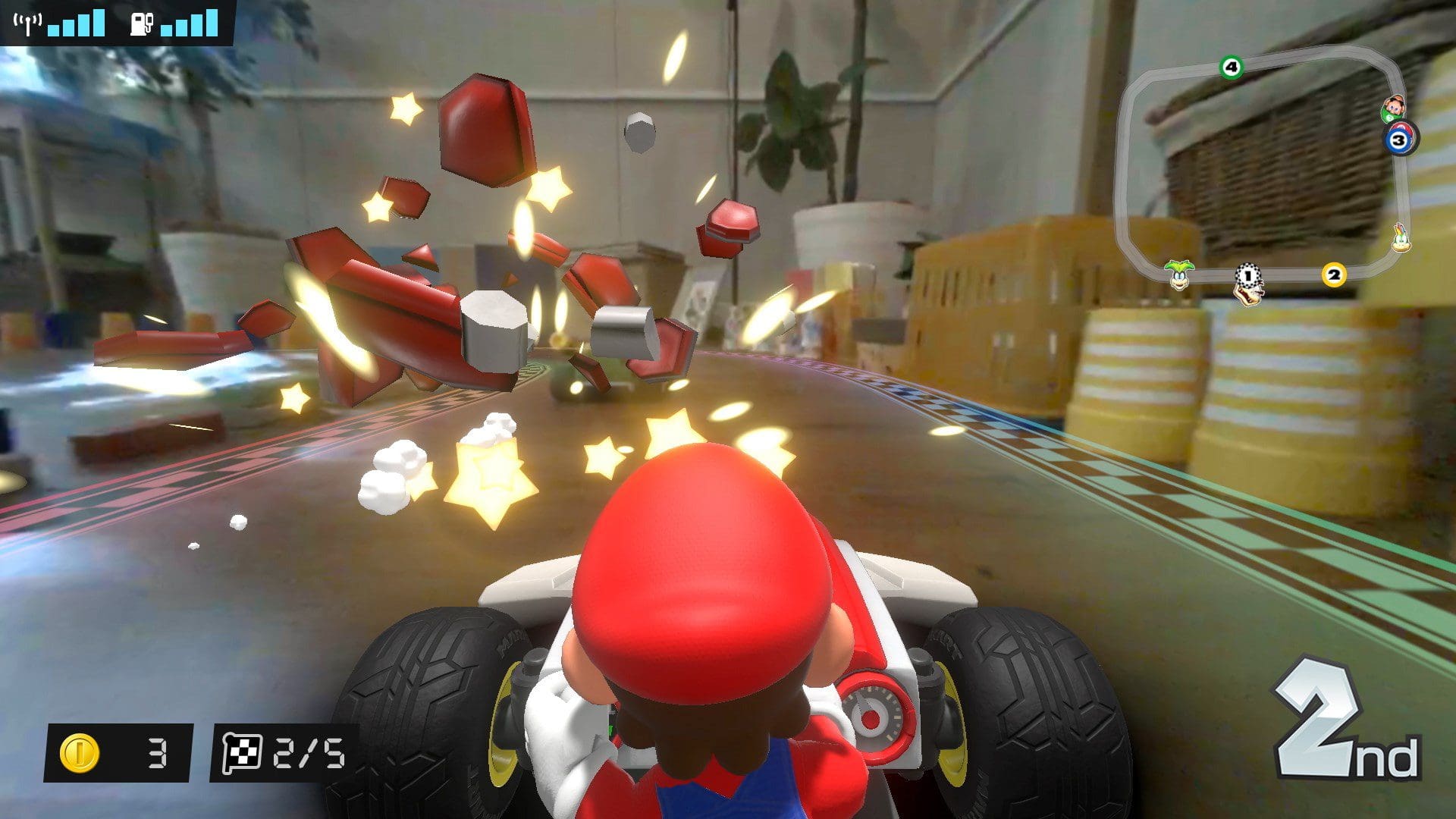
Written by Kodi Boyd
Mario Kart deserves to be in the annals of video game history. With its myriad of characters, plethora of tracks, and variety of game modes throughout the years, the franchise is about as integral to Nintendo’s success as the Mario games themselves.
Various versions of this game have been released throughout the years, and it’s difficult to find a gamer that hasn’t at least picked up a Mario Kart game once or twice in their life. The sheer competitive aspect of racing head to head with friends or loved ones was one of the many reasons the franchise has survived to this day, while still remaining relevant despite the simplicity of the actual concept. When the first iteration of Mario Kart appeared in 1992, many gamers were curious about the game, and the simplistic design and accessibility, not to mention the familiarity of the characters and tracks, quickly became a legendary franchise in the making.
The original game on the Super Nintendo console was released as Super Mario Kart in 1992. Since it was the first entry in the franchise, the addition of the Mario character roster was important in enticing gamers to buy the game. The racers that could be chosen from were all familiar Mario franchise characters, Mario, Luigi, Peach, Toad, Yoshi, Bowser, Donkey Kong Jr., and Koopa Troopa. The tracks were based off of some of the levels of the Mario franchise as well, with Rainbow Road and Choco Island ending up being fan favorites, due in large part to their inherent difficult and interesting music scores. The competitive design of the courses and the different stats of the racers kept players coming back for more, wanting to beat their friends and family repeatedly and without mercy.
Next up is Mario Kart 64. This entry was released in February of 1997, and by the time this entry entered the arena, fans of the series were excited to run out and buy a copy. New and improved tracks and graphics were a big draw to this version, and many returning players were impressed with the overall improvements made to the game, while still retaining the charm and gameplay mechanics of the original.
The roster remained relatively unchanged, save for the replacement of Koopa Troopa with Wario. Rainbow Road and Choco Island, now fan favorites, were given new obstacles to overcome by both veterans and new players, with 14 more to race through. Since this was the Nintendo 64 version, it offered support for four players, adding to the excitement of head to head races and a new layer to the competitive action. The solid racing elements, improved course designs, and memorable roster set this entry up to be yet another legendary game in the series.

The release of the Game Boy Advance spawned the first handheld entry for the Mario Kart franchise, titled Mario Kart Super Circuit. It was fun, the roster was the same as the previous game, the music score was still just as familiar and catchy, and the number of tracks increased from 16 in the Nintendo 64 version to 40 on the Advance. The Game Link Cable allowed up to four players to play while only owning one cartridge to be shared amongst them, but it did limit the play style with this method. Fans of the franchise were skeptical of this entry, however, and while it was one of the most successful GBA games created, overall in the franchise it is one of the lowest ranking entries because of lack of innovation, though this did not truly tarnish the franchise’s reputation as a kart racing game for nearly any gamer to pick up and enjoy.
The GameCube Mario Kart entry titled Mario Kart: Double Dash brought the game back to consoles in the winter of 2003. This led to many younger, prospective players begging their parents to buy them a copy for Christmas, and many did. This iteration brought a whole new way to play though, multiplayer matches weren’t the same, thanks to the addition of teamwork as opposed to only head to head play. In this game, players could choose from a variety of pairings, allowing players, if they should choose to team up instead of race against each other, the choice to control either the racer or the passenger. The racer was in charge of steering the kart while the passenger aimed items to be thrown at other racing duos. This led to an expanded way to play the game. Also the addition of the LAN support via the GameCube Broadband Adapter allowed for up to 16 players simultaneously, upping the stakes even more. The ability to link up via an internet connection launched this game back into the homes of Nintendo gamers and fans alike.
Then there was Mario Kart 8 Deluxe, which was just Mario Kart 8 with added DLC for the Nintendo Switch console. Nearly every entry in the franchise had added characters to the roster, and this entry was no different. Even the tracks have been vastly improved and the sheer number of tracks has grown immensely since Super Mario Kart on the SNES. On just the console alone, up to four players can play at once, or up to twelve using online multiplayer. While the overall racing experience is still present in this game, there are many changes to the gameplay, with the introduction of anti-gravity racing. This adds a whole new layer of strategy to the concept of kart racing, allowing players to use the walls and ceiling of a track to their advantage. In addition, the karts can be customized fully in order to add even more advantage to their runs against opponents. This new innovation led to many veteran players who may have moved on years prior to return to the game to once again challenge their friends and family to a friendly, or not so friendly, head to head series of races.
These aren’t the only entries in the entire Mario Kart franchise, many others have come and gone since, with every Nintendo console having at least one entry available to play, save for the GameBoy and GameBoy Color. Most of the handheld entries were less innovative than the console releases, and the entries mentioned were some of the most notable games in the franchise, each adding some new element to the series and building the reputation that Nintendo wanted to create a true franchise legacy. With each version of the game comes a slew of new and returning players ready to race head to head, compete, and strategize to win. With as many iterations as there have been for the series, it’s no wonder so many players are familiar with the gameplay mechanics, characters, and tracks, that they still keep coming back for more, year after year.

